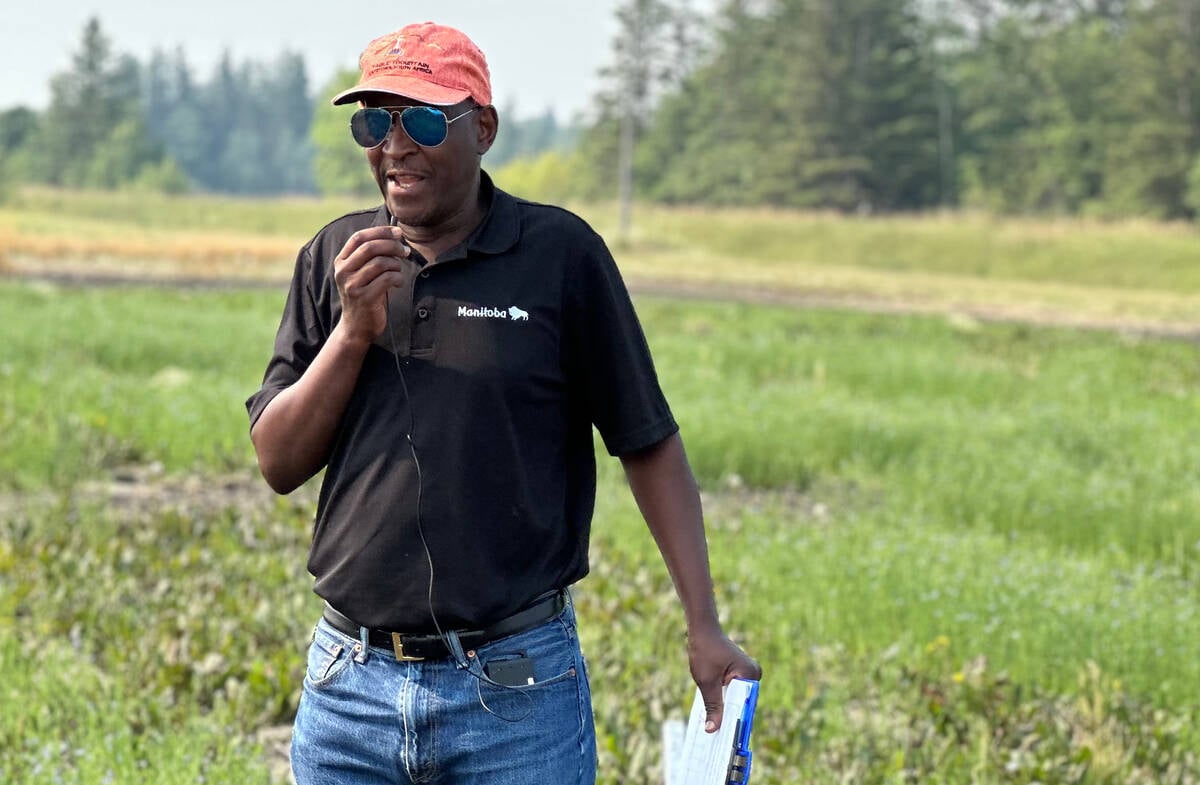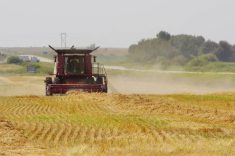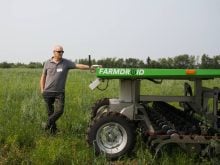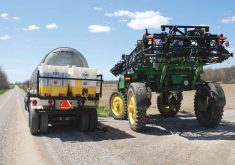Glacier FarmMedia – Weeds can’t form herbicide resistance if they’re kept out of the field in the first place.
That’s the rationale behind seed destructors like Redekop’s seed control unit, which pulverizes seeds coming out of the back of a combine.
Why it matters: Industry is exploring non-chemical weed control options in the face of herbicide resistance.
Read Also

How much nitrogen can farmers really cut?
Manitoba fertilizer trials look for nitrification inhibitor sweet spot, to lower greenhouse gas emissions and cost without hurting yield.
Seed destructors have dug only a narrow foothold in Canadian agriculture. Earlier this year, an Agriculture and Agri-Food Canada researcher told Glacier FarmMedia that she knew of only 30 such devices in service as of fall 2023.
That’s far behind Australia, where herbicide resistance has driven the technology into popularity.
Redekop’s seed control unit is only suited for combines of Class 8 and larger due to its relatively high horsepower demand.
“We say it’s in that 65- to 80-horsepower range,” says Trevor Thiessen, CEO and owner of Redekop. “Ours is like a blunt-force impact mill where we’re trying to hit the seeds.”
Many family farms use older, smaller combines that can’t spare that much muscle.
“If you look at the North American market, there’s something like 50,000 John Deere STS combines still running out there,” said Thiessen.
The next weed seed control option from the Saskatoon-area company will hopefully lower that threshold. Earlier this month, Redekop announced it is working on an alternative seed destruction concept in partnership with U.S-based Global Neighbor Inc.
The new concept uses the Dayton, Ohio company’s directed energy flora control technology, which applies a specific spectrum of light to kill weed seeds exiting the back of a combine.
“If you think about sterilization processes, there’s different ways you can use infrared light. In that context it’s similar. It basically devitalizes the seed. It doesn’t crack it or burn it. It impacts the seed in a way that makes it nonviable,” Thiessen said.
The energy draw is significantly less than the original seed control unit. The company estimates that the technology will decrease the horsepower need to 10-15 hp. At those levels, Thiessen anticipates little trouble in setting up farmers with Class 6 or Class 7 combines.
Redekop expects to expand its customer base as a result. Weed seed destruction has garnered particular interest from organic growers, Thiessen noted. Until now, however, Redekop had to turn potential customers of its original units away if combines were too small.
“Global Neighbor had developed the concept of using this. They had done lab-scale tests. Their problem was how do we make this work in a combine setting, which is why we got involved with them because that’s our expertise,” Thiessen said.
“Over the last couple of years, we’ve been refining it and working with them. The partnership is being announced now. But really, I would say it started two years ago.”
Hitting the field
The company expects to have two working prototypes installed on combines this year, one in the U.S. and one in Canada.
“We’ve done a couple of prototypes and we’re still working on fine-tuning the exact way that it’s going to mount,” Thiessen said. “We’ll separate the chaff stream, which is where the vast majority of weed seeds are contained, and we’ll direct those into this Global Neighbor device.
“Once it’s done, we’ll use our chaff-spreading expertise to redistribute that material back into the waste stream of the combine.”
Larger seeds are another problem. The Global system is not as effective at killing volunteer corn or soybean.
It also may not be feasible for large machines. A large combine has too much material coming through too fast for the current light technology to handle. The initial model will be designed for use on Class 7 and smaller machines.
“In the early days, it won’t be able to handle the volume of seeds from a Class 8 or 9 combine,” said Thiessen. “There’s just too much chaff material coming off the back of these huge shoes.”
A hybrid system may be developed to make the technology more feasible for bigger machines, but the company says it will focus on that possibility after the initial light-only design is finalized.
“We have a concept of using a hybridized model where you have a reduced horsepower mill and this light technology combining the two,” Thiessen said. “That’s something we’ve been playing around with.
“So on a hybrid, the mill could be scaled back to work on the large seeds and all the small seeds could be done by the light technology. But in the short run, over the next year or two, we’re going to be working on a stand-alone product with just the light technology separate from ours.”
After field trials are complete this season, Thiessen expects to have a limited production release next year.
“We’re hoping to scale up that test into a soft launch in 2025 with kind of a full launch in 2026. If it goes well this year, we should see a number of units on the market in 2025.”
Redekop hopes to offer the light-based system at a retail price of about 60 per cent of what their initial unit goes for.
“That would put it, in Canadian dollars, somewhere in that $60,000 range,” Thiessen said. “We’re hoping maybe even a little better, but there’s a lot to be sorted out on that.”















